Freemasonry is a Fraternity shrouded in mystery. We can tell this not only from its symbols and ceremonies, but also from the definitions that certain Masonic organizations and certain Freemasons assign to it.
We therefore learn from two sources, representing the two predominant pillars of the Fraternity, the English and the French, that Freemasonry is either “one of the oldest social and charitable organizations in the world” or an “initiatory institution par excellence secular, philosophical and progressive”.
A third definition (perpetrated from the USA) we come across is that Freemasonry is an organization dedicated to “making good men better”.
If we were self-sufficient, we could limit ourselves to these definitions. But since we are Freemasons and are supposed to be constantly in search of Truth, we could dissect and analyse them in order to formulate a fourth definition, different from the previous ones.
Although we meet in Lodges, making contact with men belonging to different cultures, social backgrounds and we cultivate the principle of mutual help, it could be a mistake to say that Freemasonry is a social and charitable organization.
If we reduce it to this point, we would be nothing more than mere contributors wearing silly aprons and participating in meaningless ceremonies.
To achieve such a goal, we would only need a cash register, a cashier and some pubs where we can meet to waste our time, socializing without any particular purpose.
Although the degrees of Freemasonry contain certain philosophical aspects, to reduce it to a purely philosophical organization would mean that it has no seed of knowable truth, and that all interpretations of its symbols are left to the invention of our own minds. We would thus be put in the position of searching within it for something that we could never find.
Although with the help of the moral lessons that the degrees of Freemasonry offer we could say that we may become better, we must take into account the fact that we can be good people without being Freemasons.
It would be an attempt to turn the Fraternity into a cult if we said that only Freemasons are good people and that you cannot be a good person without Freemasonry.
Relative to the global population, the number of Freemasons is very small, and we cannot be sure that only a few million people are good or interested in becoming better, given that we are not even sure that all Freemasons are interested in this aspect.
![]()
… so what is Freemasonry after all?
Freemasonry is such a mysterious organization that to most of its members it is itself a mystery, and so conspiratorial, one might say in order to shatter the illusions of certain profanes, that there are brethren within its ranks who seem to conspire in the greatest of all the possible conspiracies: that against human nature itself, endowed with reason and an intelligence that animals do not possess.
At the same time it is an organization with a noble purpose, for those brethren who have eyes to see and ears to hear as well as for those profanes who, being able to observe this, knock at the doors of the Temple and ask to be received in order to join it for her higher mission.
If we take a look at the definitions offered by scholars of the Fraternity, such as W.L. Wilmshurst, Albert Mackey, Albert Pike, and many others who are among the few who have succeeded in giving it meanings more suitable than those of some contemporaries, we find that:
“Freemasonry is a science, […] a system of doctrines which is taught, in a manner peculiar to itself, by allegories and symbols.” (Albert Mackey, The Symbolism of Freemasonry), but “[masonry] is not made for cold souls and narrow minds, that do not comprehend its lofty mission and sublime apostolate” (Albert Pike, Morals & Dogma of the AASR).
“Those who enter it, as the majority do, entirely ignorant of what they will find there, usually because they have friends there or know Masonry to be an institution devoted to high ideals and benevolence and with which it may be socially desirable to be connected , may or may not be attracted and profit by what is disclosed to them, and may or may not see anything beyond the bare form of the symbol or hear anything beyond the mere letter of the word.
Their admission is quite a lottery; their Initiation too often remains but a formality, not an actual awakening into an order and quality of life previously unexperienced; their membership, unless such an awakening eventually ensues from the careful study and faithful practice of the Order’s teaching, has little, if any, greater influence upon them than would ensue from their joining a purely social club.” (The meaning of masonry, W.L. Wilmshurst).
These statements may seem full of arrogance to some brethren and also in opposition to the principles of Liberty, Equality and Fraternity that Freemasonry fiercely upholds.
But can one be free without being educated? Can one be equal with the rest of his fellows if he is not free? Can one consider himself their brother if he is not their equal?
And last but not least: can one call himself a Freemason if he is not educated, free, brother to his fellows, if he does not learn and if he does not embark on a mission of guiding others to do the same?
Here’s how important the education of a man who desires to become a Freemason is, and how many disadvantages are rendered to Freemasonry by those profanes who join for petty purposes, but whom we find among us and recognize as such as brethren.
We can learn about such brethren from Albert Mackey’s article entitled “Reading Masons and Masons who do not Read”:
“The Master Mason who knows very little, if anything, of the Apprentice’s degree longs to be a Knight Templar […] The height of his ambition is to wear the Templar cross upon his breast. If he has entered the Scottish Rite, the Lodge of Perfection will not content him, although it supplies material for months of study.
He would faster rise higher in the scale of rank, and if by persevering efforts he can attain the summit of the Rite and be invested with the Thirty-third degree, little cares he for any knowledge of the organization of the Rite or the sublime lessons that it teaches.
He has reached the height of his ambition and is permitted to wear the double-headed eagle.
Such Masons are distinguished not by the amount of knowledge that they possess, but by the number of the jewels that they wear.
They will give fifty dollars for a decoration, but not fifty cents for a book.”
The same visionary scholar further claims that:
“[Freemasonry] will deteriorate into social clubs or mere benefit societies. With so many rivals in that field, her struggle for a prosperous life will be a hard one.
The ultimate success of Masonry depends on the intelligence of her disciples.”
In the age of the Internet we can easily observe the global Masonic phenomenon and how his words are beginning to come true.
We see more and more members for whom it is more important to debate whether their Masonic ring should be worn with the points in or out, more and more who are flattered by the titles and distinctions they wear and feel infallible.
We see in certain areas of the world how it has declined even more than Albert Mackey and others “predicted”, entire Lodges or entire Grand Lodges becoming business or political lobby clubs under the cover of a so-called Freemasonry that only they know about.
We see how Freemasonry has fewer and fewer enemies without and more and more within, and the main cause of this is the lack of understanding of what Freemasonry really is supposed to be.
We are more than six million members, belonging to different Grand Lodges, Lodges, Rites, but who essentially have the same mission: the progress of ourselves and of Humanity towards Freedom.
And yet we see both ourselves and humanity in a continuous regression, in a continuous state of slavery.
Maybe Freemasonry has opened its doors too wide. Perhaps some have not understood that the survival of Freemasonry in order to achieve its sublime purpose lies not in the number of members it has, but in their quality.
Maybe we need less members and more Freemasons. Less men in Freemasonry and more Freemasonry in men.
We should stop for second and we should all reflect:
![]()
…are we really Freemasons, or just dues members?
Footnotes
Bibliography
Bibliography:
Albert Mackey, The Symbolism of Freemasonry;
Albert Mackey, “Reading Masons and Masons who do not Read”;
Albert Pike, Morals & Dogma of the AASR;
The meaning of masonry, W.L. Wilmshurst.
Article by: Gabriel Anghelescu

Gabriel Anghelescu is a Romanian Freemason interested in the spiritual and esoteric aspects of the Fraternity.
His passion for esotericism and Freemasonry began at an early age. His first contact with initiatory societies was the International Order of DeMolay, a para-Masonic organization for boys aged 12 to 21. He was initiated in Jacques de Molay Chapter, in Bucharest, where he later served a mandate as the Master Councillor of his Chapter.
He received the Masonic initiation in a French Rite Lodge bearing the distinctive name of Apolodor din Damasc (Apollodorus of Damascus), working under the Grand Orient of Romania and years later he joined L'Athénée des Etrangers Lodge, which works under the auspices of the United Europe Regular Grand Lodge (Marea Lojă Regulară Europa Unită), in the Orient of Bucharest.
He is now the Grand Spokesman of the United Europe Regular Grand Lodge (Romania), a Past Master of L'Athénée des Etrangers Lodge and a member of the Ancient and Primitive Rite of Memphis 1815 (Romania).
Recent Articles: by Gabriel Anghelescu
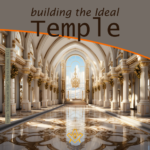 As Freemasons we could say that we have a double mission, namely building two ideal temples. Building an ideal Inner Temple, so that we can then transpose the inner construction on a larger scale and build an ideal Temple of Humanity. But can such ideal temples ever be realized, given that at first sight the word "ideal" seems to be synonymous with perfection? The answer may be both no and yes. |
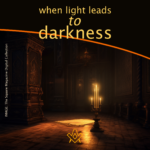 Embark on a thought-provoking journey into the world of Freemasonry in "When Light Leads to Darkness". Discover why remaining an eternal Apprentice is essential and how excessive light can shroud you in darkness. Unearth the hidden truths behind Freemasonry's symbols and teachings. Can too much 'knowledge' cloud 'understanding'? Read on to explore. |
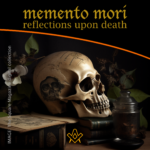 With a focus on "Memento Mori", explore the deep symbolism of the first and third degrees in freemasonry. Gain a unique insight into the reflections upon death and how they are intertwined with the teachings of the craft as Gabriel Anghelescu takes you on an intriguing journey of mystery and enlightenment. |
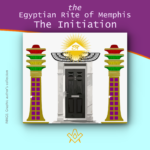 The Egyptian Rite of Memphis: The Initiation Following on from last month's article "The Egyptian Rite of Memphis: Past, Present and its Relevance for Today's Freemasonry", Gabriel Anghelescu leads us on the path of the Initiate into the Chamber of Reflection and beyond. |
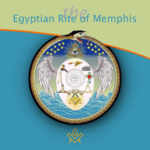 Over time many Masonic Rites have developed, each Rite having its own history, legends, and rituals. Some of them are still practiced today, and others have ceased to exist. The best known and at the same time the most practiced Masonic Rites are the Ancient and Accepted Scottish Rite and the York Rite. Among other Masonic Rites, we can find the Rite of Memphis, to which this article is dedicated. The Rite of Memphis is a branch of Esoteric Freemasonry and specifically one of the Rites of Egyptian Freemasonry. |
masonic knowledge
to be a better citizen of the world
share the square with two brothers

click image to open email app on mobile device








